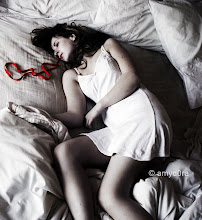Click to enlarge.


Images: Sportsgirl, Natasha, Maise, www.maximillia.com and www.frockyou.com.au
Tuesday, October 14, 2008
>Bang bang<
Saturday, October 11, 2008
Modelling, it's reality.
 Reality TV shows have been dominating our television sets for the past few years. As a consequence of their ever-pervading presence, these shows are actively influencing what people aspire to be.
Reality TV shows have been dominating our television sets for the past few years. As a consequence of their ever-pervading presence, these shows are actively influencing what people aspire to be.
Admit it, you’ve all seen at least one episode of Next Top Model, may that be the American or Aussie version, or perhaps you’ve flicked to the new Jennifer Hawkins series, Make Me A Supermodel.
Australian modelling agencies have experienced a sudden increase in applicants as a result of these shows strutting their stuff on our television screens.
Experts in the modelling industry believe that such shows fuel interest in young guys and girls, encouraging them to seek modelling contracts with agencies.
“It’s because of all these rotten, rotten television shows” says Nicholas Alexander, booker at Scene Model Management in Sydney. “I always get lots of people calling me in the final episodes. Generally people have an instant celebrity need.”
In some cases this increase is being felt before the series has even come to a close.
Mr. Alexander said that the first few days of Search for a Supermodel brought in a lot of interested hopefuls to Scene Model Management, where he even recognised a few faces of those who had tried out but had not made it into the next round.
Catharine Lumby, Professor of Journalism and Media Research Centre at UNSW says that although “there may be an increase in applications… I don’t think that means they’ll be a big increase in the number of models. It’s like any industry, there’s a selection criteria.”
Instead Walsh expects Make Me A Supermodel will give a wider audience a more thorough view of the process, of recognising a particular look and then initiating the transformation into a professional model.
So while fashion shows, magazines and Miss Universe pageants encourage girls to catwalk, pout and pose in front of their full-length mirrors, the ‘reality’ aspect of modelling shows encourage these girls to go out and actually catwalk, pout and pose in front of modelling agents.
According to Dr. Nicole Matthews, lecturer of Media and Cultural Studies at Macquarie University, by being able to pick and choose from a line of contestants, these shows seem to be limiting the definition of beauty. In particular they are reflective of the pressures placed on women.
“I don’t like the emphasis in our culture on young women, which is about being slender, about being even-featured,” she said. “It doesn’t incorporate people with differences of body shapes, people with disabilities, so there’s a very narrow understanding of what it means to be beautiful in those sorts of shows.”
“It’s perfectly rational for a young person to decide they want to be famous than to decide they want to be a doctor or lawyer.”
On average, modelling agencies receive between 50 and 60 enquires a week.
“A lot of 16-17 year-olds would be the majority,” says booker Mr. Alexander. “And then a few delusional people.”







